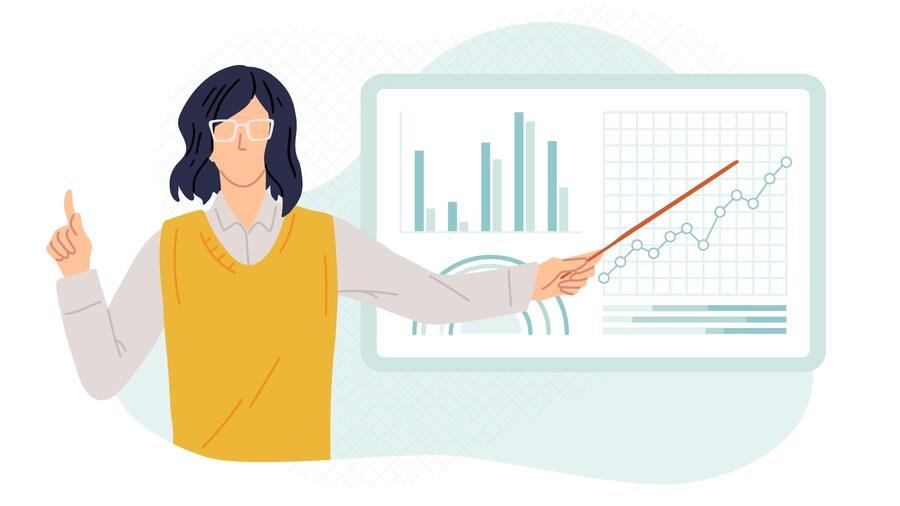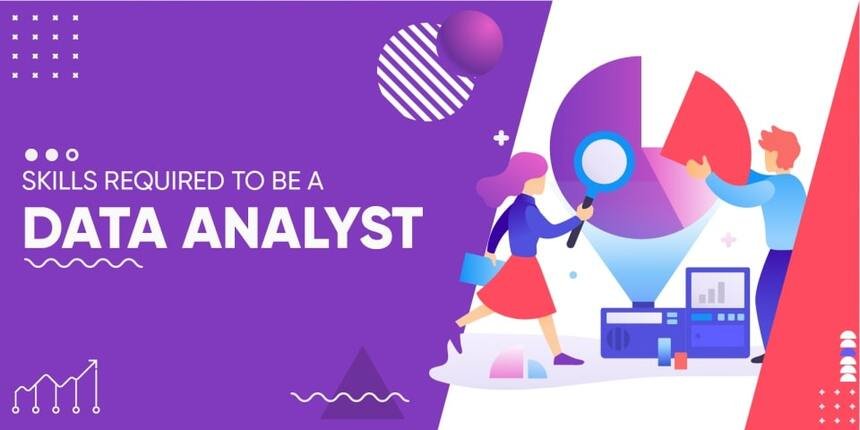Before actually starting to go on and on about data analytics, there’s one thing that I found to be really interesting. The positions for data science and analytics are the hardest ones to fulfill in a company. So, if you choose to show interest in Data Analytics, there are tons of positions. A lesser amount of people are available means you have your time to shine.
Now, for all of you aspiring data analytics professionals, here’s all you need to know about Data analytics. It’s a comprehensive guide so you will be left with tons of information by the end of the article.
What is Data Analytics?

In the simplest of simple forms, you can describe data analytics to be the process of scanning and scrutinizing large amounts of information to form useful and meaningful data. I agree that even the simplest definition sounds extremely complicated. But you will surely end up getting a clear view of stuff as you read on.
To kinda play around with the topic, let’s think of data analytics to be a puzzle. To begin with, you will have to gather all of the different pieces of your puzzle. In this case, the pieces are chunks of information. So, when you’ve gathered all of the pieces of the puzzle, it is difficult for a person to wrap his head around what the end result is. Just like you are unable to predict the end result with the puzzle, normal humans, without any high technical skills cannot understand this initial pile of information.
So, you start putting all the pieces together and make meaning out of the puzzle. In the same way, the main function of data analytics is to filter out the information, clean it, and put all of it together to make perfect meaning for a human being without much technical knowledge.
In the end, data analytics is simply used for creating raw piles of information into meaningful data.
Who exactly is a Data Analyst?

To put it simply, the person who does all the stuff mentioned in the previous paragraphs is a Data Analyst. But let’s just get a little deep into this.
A data analyst does the work of collecting, processing, and performing the analysis of larger sets of information. Every single small and big business whether it is a hospital or a grocery store holds some sort of data. This data can be of any sort, it might be customer feedback or the output of marketing research.
A data analyst collects all of this kind of information and figures out different ways to make it more presentable. It makes sure to improve the customer experience. So, a data analyst does everything from data handling to data modeling and in the end reporting.
Now that we have covered the basic stuff like the description of what a data analyst is, let’s get into the interesting stuff.
What does a data analyst do?
The job of a data analyst is not easy. There is a range of different stuff that is supposed to be done. The responsibilities and work are important things to learn for a person look being a data analyst. To keep it understandable, let’s take a look at some of the basic functions of a data analyst.
-
Understand the Goal
Before getting started with anything else, the first thing a data analyst has to do is understand the end goal of an organization or company they are working for. They make use of all the different resources of a company and collect the necessary data for further simplifications.
-
Inquire
Normally, data analysts perform complicated inquires to gather as much information as possible from the nearby MS SQL servers, etc. This data is then used to simplify and create a meaningful and easily understandable end result.
-
Data Mining
In the third step, different kinds of data are mined from an abundance of different sources. The data obtained in this way is organized properly to bring out new details and information. By mining data, data models are created which increases the efficiency of a system.
-
Data Cleansing
Cleansing and wrangling the data is by far the most important task of a data analyst. When data mining and the collection of data takes place, the information found will most likely be messy and all over the place. Sometimes the data collected initially has missing values as well. So, in this step, all of this data is cleaned and cleansed to get it ready for the real purpose.
-
Examining Data
Now comes the techiest part, data analysts make use of many statistical as well as analytical tools like programming languages to carry out a logical examination of the data.
-
Interpretation of Data Trends
In this step, it’s time for the data analyst to bring out some unseen business insights. This is done by using tons of different libraries and packages to recognize the patterns and trends hidden in the complicated datasets.
-
Time to Prepare Summary Reports
In a way, data analysts are the key people behind businesses making amazing decisions. All of the difficult-to-understand data and information is turned into simple data reports with data visualization tools. This representation of data helps the leadership team in a company to make the best decisions possible.
-
Cooperation and Collaboration with other Teams
Data analysts do not just stick to their world of data and information. They will have to collaborate with many different people and teams. The data analyst interacts with the management team, development team, and data scientists to make sure that the implementation of the business requirements is done properly. This interaction is also very important when it comes to figuring out process improvement opportunities.
These are all of the basic daily functions of a data analyst, now let’s get into the process of data analysis.
The Process of Data Analysis
Data analysis is a wonderfully complex process so, let’s break it down into 6 steps for a better understanding.
Understanding the Business
As with any job in this world, data analysis has to be done to reach a certain requirement. When an analyst is working for a business, they will have to determine what the business objective is, the data mining goals, and the project plan are all to be determined. In this section of data analysis, the main objectives of the business are determined.
Exploration of Data
After the objectives are set, the initial data has to be gathered. All of the different sorts of data of a business are gathered and explored to compile the data and information that is necessary. Basically speaking, the data required to reach the end result expected by the company is collected in this step. This step is particularly important for determining the quality of the data that is acquired.
Preparation of the Collected Data
Until this step, all the data that is collected is messy and not very easy to understand from a common man’s perspective. The preparation of this data is done by cleaning and constructing it to form meaningful data. The data acquired after cleaning and construction is then formatted. This step takes the data to a next level to be completely analyzed further. Data is basically cleaned, integrated, and selected to be put into a format that will be analyzed.
Modeling the Data
To put it in the simplest way possible, a technique is selected for modeling, a test design is generated. And in the end, a model is built and is accessed. Data modeling is done to analyze a relationship between two specific selected objects in the data that has been compiled. Another thing that’s done in this process is that test cases will be built for assessing the model and finally, the model is tested and implemented on the data.
Evaluation
After all of the above steps have been done, the data is then reviewed to spot any errors in it. When it’s clear that nothing is wrong with the data, it is prepared for the next step. So, simply speaking, the test cases are reviewed to find any possible errors. If any errors are found, they are fixed and made ready for the final step.
Deployment: The Final Step
The deployment is the section that has to be done with tons of attention. Deployment is planned and maintained carefully and a final report is made. The project is reviewed once again after the final report is made. To make this step clear, the main thing that is done is to review the end result one last time. After all of this is done, the project is handed over to the company and if any errors occur, then that’s bad news.
This is how the complete process of data analysis is performed and the process is also called the business analytics process.
Skills Sets Required To Be a Data Analyst

In order to perform all of the above-mentioned tasks as a data analyst, you will need to have some specific skill sets to become a data analyst. It’s completely true that a data analyst can pull through his/her work with one or two skills. They need to have a ton of different skills in working with different tools. Now, let’s get to know some of the basic skillsets needed to become a data analyst.
1. A degree as well as domain expertise
Education is the first step you can take towards becoming a data analyst. You will need to have a degree in any of the fields related to data analytics. A person should also have domain expertise in the area of work. But on the other hand, if you are a person from a different educational background, you still have the chance to become a data analyst if you possess the required skills.
2. Enough knowledge about the data analytics tools
Experience in working with different data analytics tools is necessary because almost all of your work is going to be on them. Writing SQL queries as well as procedures is very important. Along with that, a person will also need to know the shortcuts of Microsoft Excel, IBM SPSS, Matlab for analyzing the trends. These tools are very important for deriving the right insights. If you have accurate knowledge about data analytics tools, that is a major plus.
3. Programming knowledge
Programming knowledge is a major requirement in being a data analyst. Writing codes helps you solve complicated problems in an easy manner. Having amazing knowledge of different programming languages like Python, R, JavaScript, etc is not only necessary but extremely helpful. Especially, while analyzing tons and tons of information which is kind of a daily task if you become a data analyst.
4. Command over Data visualization tools
Data visualization tools are some of the main aspects of the work done by a data analyst. Various business reports are created with the help of data visualization tools. There are several popularly used data visualization tools like Tableau, Power BI, QlikView that you should have command over to do a good job as a data analyst.
According to everything we have discussed in the article so far, data analytics seems to be a complete digital job. But that’s not the case, as a data analyst, you are supposed to have good communication and presentation skills as well. This is especially helpful to put your ideas on the table for the clients and stakeholders.
5. Knowledge of machine learning and statistical algorithms
You have to have good knowledge of concepts like hypothesis testing, regression analysis, probability distributions, etc. To become a data analyst, you should also have command over different classification and clustering techniques.
Conclusion
If you are an aspiring data analyst, get started with possessing knowledge about all of the above-mentioned stuff. They will help you a lot. Data analyst positions are not an easy grab. We hope that this article has given you enough information on everything you need to know about data analytics.
Also Check Our Top Offerings:
- Illinois Driving Test Questions and Answers PDF 2022
- NJ Driving Test Questions and Answers PDF
- Texas Driving Test Questions and Answers PDF
- New York Driving Permit Test Questions and Answers PDF
- California Real Estate Exam Questions & Answers PDF
- NCLEX 3500 RN Practice Questions and Answers PDF
- Michigan Driving Test Questions and Answers PDF
- RBT Practice Exam 75 Questions & Answers PDF


